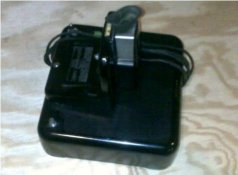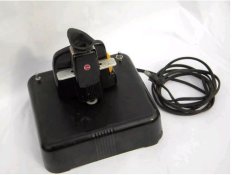holmburgers
Member
Hi all,
I have an opportunity to buy an old Kodak Color Densitometer Model 1. However, judging from the picture (the 1st attached photo) the filter "tab" is missing, as evidenced by the 2nd photo of what I believe to be a complete unit.
So, without the filter tab, is this unit still useful for simple black & white densitometry (non pyro negs)?
Moreover, it doesn't seem like it would be too hard to make my own filter tab, if indeed it is only a strip of metal with 3 patches of filter material. I guess the question then is what are the appropriate filters to use. I have Wratten 29, 47B and 58's that I could cut off a small patch from and mount it in some cardboard.
Your expertise is most appreciated!
Thanks,
Chris
I have an opportunity to buy an old Kodak Color Densitometer Model 1. However, judging from the picture (the 1st attached photo) the filter "tab" is missing, as evidenced by the 2nd photo of what I believe to be a complete unit.
So, without the filter tab, is this unit still useful for simple black & white densitometry (non pyro negs)?
Moreover, it doesn't seem like it would be too hard to make my own filter tab, if indeed it is only a strip of metal with 3 patches of filter material. I guess the question then is what are the appropriate filters to use. I have Wratten 29, 47B and 58's that I could cut off a small patch from and mount it in some cardboard.
Your expertise is most appreciated!
Thanks,
Chris













